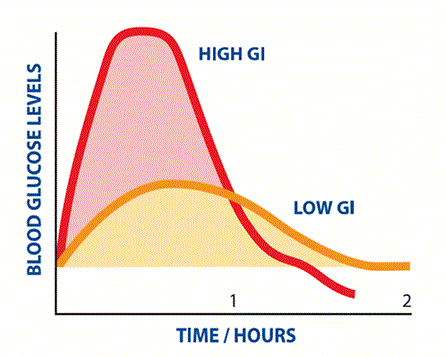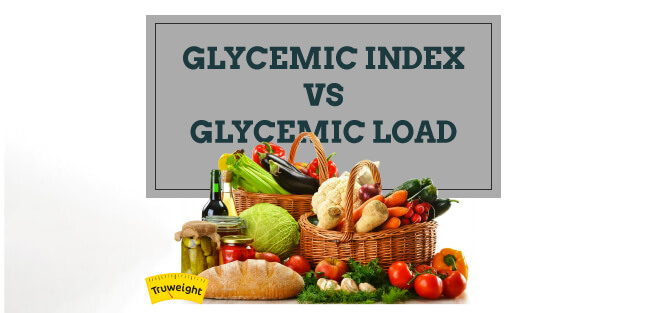Glycemic Index & Glycemic Load
Understanding glycemic load is just as important as the glycemic index of foods
Glycemic index vs. glycemic load
The glycemic index (GI) assigns a numeric score to a food based on how drastically it makes your blood sugar rise. Foods are ranked on a scale of 0 to 100, with pure glucose (sugar) given a value of 100. The lower a food’s glycemic index, the slower blood sugar rises after eating that food. In general, the more processed a food is, the higher its GI, and the more fiber or fat in a food, the lower it’s GI.
Consumption of high-GI foods causes a sharp increase in blood glucose concentration, whereas consumption of low-GI foods results in a lower blood glucose concentration.
The glycemic load (GL) is obtained by multiplying the quality of carbohydrate in a given food (GI) by the amount of carbohydrate in a serving of that food.
Lowering dietary GL can be achieved by increasing the consumption of whole grains, nuts, legumes, fruit, and non-starchy vegetables, and decreasing intakes of moderate- and high-GI foods like potatoes, white rice, white bread, and sugary foods.
The differences between glycemic index and glycemic load can be difficult to understand. But both are important to measure how your body processes sugar, which is important to your overall health.
The GI is essentially a way of ‘ranking’ carbohydrate foods according to the speed at which they cause our blood glucose levels to rise and fall. High GI foods are those which are more quickly digested and absorbed while low GI foods break down more slowly, gradually releasing glucose into the bloodstream.
Carb amount and quality
Balancing both portion size and carbohydrate quality will help you build meals that won’t send blood sugar levels skyrocketing. Eating small amounts of high-GI foods can minimize blood sugar spikes.
You also don’t have to cut carbohydrates out completely. A low-glycemic diet can still contain high-quality carbohydrates. Both a whole apple and apple juice have carbohydrates, but an apple has a GI value of 35 whereas apple juice has a GI value of 41.
Since they both have carbohydrates, they will increase blood sugar, but the soluble fiber in the peel of the apple will diminish the glucose response. Other fiber-friendly foods such as berries, lentils, and avocados have been shown to reverse insulin resistance, an essential step in stabilizing blood sugar and improving insulin sensitivity.
Protein and fat
In addition to eating foods with soluble fiber, another strategy is pairing a carbohydrate with a fat or protein, two nutrients that help to slow glucose absorption, prevent rapid spikes, and improve satiety. For example, overnight oats are a low-glycemic breakfast meal consisting of whole rolled oats, a splash of whole milk, flax seeds, and a scoop of peanut butter. So even though there are carbohydrates, the combination of fiber, fat, and protein will produce a slower glucose response.
Processed foods
Sticking to whole, unprocessed foods is another way to minimize a glycemic response. Processed foods are typically packaged, shelf-stable foods loaded with salt, sugar, and fat. These ingredients tend to tax our metabolism, making it difficult to naturally digest and absorb them. Opting for minimally processed foods like colorful non-starchy vegetables, lean proteins, and healthy fats, is better for your blood sugar and metabolism.



